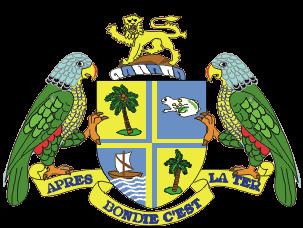 | ||
A camouflage passport is a document, designed to look like a real passport, issued in the name of a non-existent country or entity. It may be sold with matching documents, such as an international driver's license, club membership card, insurance documents or similar supporting identity papers. A camouflage passport is not a real, valid passport and is to be distinguished from a valid second passport, which an individual with dual citizenship may be eligible to hold, a novelty fantasy passport, or a fake of a real passport.
Contents
Origins
False identity documents have a long history but in 1998 the idea of the camouflage passport was credited by The Financial Times to Donna Walker of Houston who said she had the idea ten years earlier when she heard of an American on a hijacked aircraft being shot because of his nationality. Walker said that she started by asking the Sri Lankan embassy whether they still had rights over the name Ceylon and, finding they did not, went on to ask the U.S. State Department whether producing a passport in that name would be illegal, they "couldn't show me it wasn't". Walker went on to produce hundreds of passports in different country names, trading as International Documents Service, and described her "finest hour" as being during the Iraqi invasion of Kuwait when a group of European oil executives were able to use her documents to pass through Iraqi checkpoints and escape to Jordan. She said the basic idea was to look like "a not very interesting man from a not very interesting country".
Form
Camouflage passports are generally produced in the name of countries that no longer exist or have changed their name. Often these are former colonies that changed their name on independence. Others use the names of places or political subdivisions that exist within a real country, but that have never issued or cannot issue passports, for instance the British Hebrides which are islands off the west coast of Scotland that have never been separately independent. Usually, the names chosen have a plausible or familiar ring to them. Names that have been used include:
Purpose and legality
According to sellers, the purpose of a true camouflage passport, rather than a novelty fantasy passport, is to provide false identification to be used in an emergency to protect the bearer from unwelcome attention at border crossings or anywhere that they might be asked to produce their documents and could be at risk. The camouflage passport, they say, is therefore intended primarily to deceive a customs, immigration or police officer into believing that the bearer is a person from a small, unimportant, and far away country that is not an enemy, or, in a terrorist situation, that the bearer is not a potentially high value hostage.
Others argue, however, that the true purpose of these documents is to be used in criminal activity, including terrorism and money laundering, and that the majority of camouflage passports are bought for those purposes. After the attacks of 9/11, the United States restricted the sale of camouflage passports, although they are still legal to possess in countries such as Australia, New Zealand, and all of the European Union. Laws elsewhere may vary.
In 2011, the European Union resolved that a "non-exhaustive list of known fantasy and camouflage passports" should be drawn up that "should not be subject to recognition or non-recognition. They should not entitle their holders to cross the external borders and should not be endorsed with a visa." A list was subsequently published and last updated in January 2014.
Sellers
The producers of camouflage passports are generally internet based businesses that specialise in producing various types of identify documents that may be in real or false names. Other services often offered include offshore company formation, introductions to offshore banking and financial services providers and similar services all targeted at international mobile individuals and those interested in avoiding tax and government regulation. Despite several companies withdrawing from this market in recent years, others continue to operate, offering passports that purport to include UV tags and holograms for verisimilitude.
Fantasy passports
Fantasy passports are passport-like documents issued as a novelty or souvenir, to make a political statement or to show loyalty to a political or other cause.
Souvenir United States state passports have also been issued, for Nevada or the Republic of Texas for instance, but these typically are clearly marked as novelties.
Examples include:
